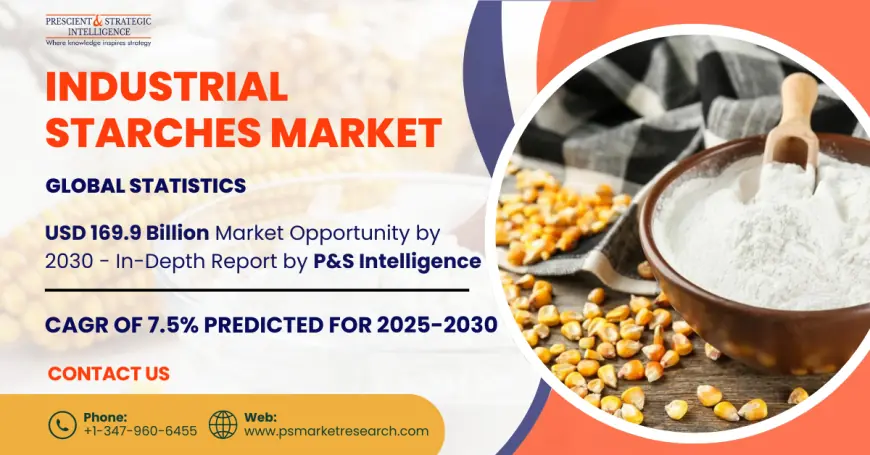The Unsung Hero of the Industrial World: Industrial Starch
Discover how industrial starch plays a crucial role in various industries, making it an unsung hero of the industrial world.

Starch is utilized in several industrial applications as emulsifiers, defoaming, and viscosities agents. Starches are appreciated for their capability to impart textural properties and offer gelling or film formation.
Much of the starch utilized for industrial purposes should be physically and chemically altered to advance performance or to offer functional persistence.
Progressively, however, as the genetics behind starch biosynthesis are better understood, native starches can be chosen to enable physical or chemical alteration protocols to be improved or to be more fully used as non-modified starches. the development and obtainability of specialty corn types, breeding approaches used, and the challenges and potentials for new methods.
The industrial starches market is experiencing growth and is projected to reach USD 169.9 billion by 2030.
The Versatility of Industrial Starch
The utilization of industrial starch is extremely diverse, fortifying it as a vital component in numerous items and processes. Here are some of the methods in which industrial starch is used:
Food Industry: Starch is a very popular thickening agent utilized in an extensive variety of food items, from gravies and sauces to puddings and soups. It offers the needed texture and consistency we like in our favorite dishes.
Paper Industry: Papermaking comprises the utilization of starch to surge paper strength and advance printability. Starch works as a binder, aiding the paper fibers to stick together.
Textile Industry: Starch is utilized to size and finish fabrics, providing them an even and polished look. It also aids in avoiding creases and folds during storage and transport.
Pharmaceuticals: In the medicinal sector, starch is utilized as a binding agent in tablet making. In the pharmaceutical sector, starch is utilized as a diluent, disintegrant, and binder. Newly prepared starch pastes at a concentration of 5–20% are regularly used throughout tablet manufacture. At 5–15% concentration, starch treasures its applicability as a disintegrant in several tablet formulations (5).
Adhesives: Industrial starch is a major component in many adhesives, such as those utilized in the making of stamps, cardboard boxes, and envelopes.
Biodegradable Plastics: Scientists are finding the utilization of starch-based recyclable plastics as an ecological alternative to old-style plastic materials.
The Process of Extraction
The removal of industrial starch is a captivating procedure. Starch is generally removed from harvests through a series of steps that include crushing, cleaning, and separating the starch from other components like fiber and proteins. The outcome is a fine white powder ready for its numerous workings.
Starch sweeteners
Starch sweeteners and sugar alternatives include fructose glucose syrup, sorbitol, glucose (dextrose), and sorbitol. Such items are utilized for conservation, sweetening, color, or texture, in numerous edible and drinkable items, and across a diversity of industries from pharmaceuticals to food & beverage.
The Future of Industrial Starch
As our world becomes more concentrated on sustainability, industrial starch is expected to play an even more vital role. It is a multipurpose ingredient that can contribute to the growth of ecological materials and items, from packing of textiles and beyond.
Source: P&S Intelligence












